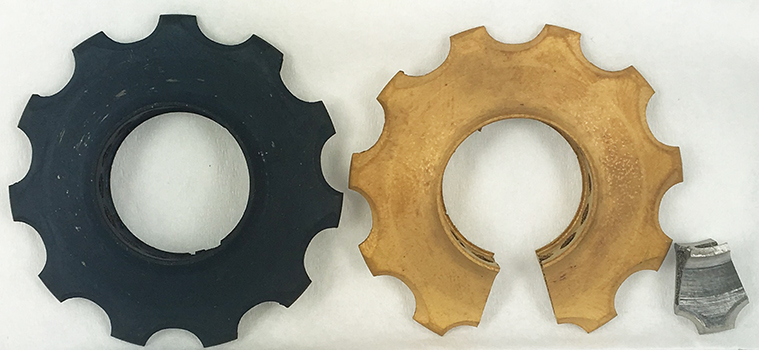DTU researchers have developed a new patentable and simple method to harden the surface of the lightweight metal titanium and thus multiply its strength. With an increasing use of 3D metal printing, the use of titanium will probably skyrocket.
Titanium is an attractive material due to its lightness. The material finds widespread use in not least the aerospace industry, but also auto parts and professional sports equipment such as race bikes and golf clubs are made of titanium or titanium alloys. In addition, most implants are manufactured from metal, as titanium offers a high degree of biocompatibility , so the new hip, knee or tooth can easily grow together with existing bones.
So far it has been a challenge that titanium is a very soft material, which means that it is not particularly durable with a surface susceptible to scratches or damage. A group of researchers at DTU Mechanical Engineering has now developed a new method for hardening the surface of titanium components.
“The starting point for our research was to make implants more durable, so that people with a recent hip replacement, for example, do not need new surgery due to wear and tear on the implant. But our new hardening method will also have a positive impact for all other users of titanium. For example, the new hardening method means that we can create a surface that is completely shiny and resistant to scratches—something which, among others, jewelry manufacturers and watchmakers are very interested in,” says Senior Researcher Morten Jellesen.
The researchers are in no doubt that the large development in 3D printing for industrial use will make the use of titanium even more attractive.
“Titanium is one of the preferred materials for 3D printing. And when you can then treat the surface using our method and multiply its strength, and the material becomes up to ten times harder, titanium suddenly becomes an extremely interesting material in many different contexts,” says Senior Researcher Thomas Christiansen.

Surface-hardened ‘pulley wheels’ in 3D-printed titanium alloy (printed by the Technological Institute in Aarhus); after two different ‘DTU hardening processes’.
Gases key to success
The researchers have developed a method for hardening the surface based on gases, which can penetrate all small cavities and holes in the material and thus make it strong. It is a mixture of, for example, carbon and oxygen that is used for the treatment and which adds the extra strength.
“Our section has for many years worked intensively with surface hardening of stainless steel, so we have drawn inspiration from the working methods and concepts, we have experience with from this material. Our new hardening method does, however, differ significantly in several ways,” explains Thomas Christiansen.
The two researchers are well aware that the new hardening method may prove very successful due to the increasingly large industrial use of 3D metal printing in the coming years.
“Airbus has already announced that they want to use more than one thousand 3D components in their new aircraft, Airbus A350 XWB, and perhaps even more when it becomes possible to harden the components,” says Morten Jellesen.
Titanium is a metal found in abundant quantities in the Earth’s crust. It is still relatively expensive because it is costly to extract and process, but also this area is seeing continuous development.
The microstructure of the surface-hardened pulley wheel seen in a microscope (cross-section of the component). Left: before hardening. Right: after hardening. In this case, the surface hardness has been increased five times. Images from ongoing MSc project; Emilie H. Valente.